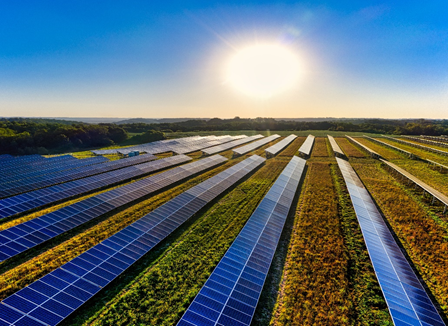
Today's world is an ever-changing one. Energy and resource management poses an increasingly crucial and complex challenge. Many green buildings utilize the latest energy/resources and monitoring technologies to consume less and conserve more energy. It makes the buildings more self-sustainable, environmentally friendly. So, let us discuss some of the best Green building technologies preferred these days.
A Green building is any building that is more energy-efficient and environmentally friendly. The process of designing, constructing, and operating a green building minimizes usage of non-replenishable materials and increases the use of recyclable materials, thus minimizing depletion of nature/environment. Which, in turn, reduces the impact on climate patterns in comparison to conventional buildings. Green buildings make it possible to reduce energy consumption and greenhouse gas emissions and improve the quality of life by reducing pollution and saving resources. A very deliberate MEP and HVAC design are required for such performance.
Green building Objectives,
Read more about Green buildings here.
Green building technologies are also known as Eco-friendly technologies. These technologies work towards creating zero-energy buildings, Residential, Commercial, Institutional, etc. The focus is on using renewable energy sources like Solar and Wind Power instead of dependence on energy generated from fossil fuels, wood, coal, etc. They also encourage, wherever possible, the usage of renewable building materials, such as engineered wood or recycled building blocks. Green building technology typically covers everything from geothermal heating to solar technologies and home automation.
Green building technologies are proven to be a crucial way to limit environmental pollution. Nowadays, this is a norm in construction projects across the globe.
Green building technologies help reduce energy bills and improve the environment by reducing dependence on non-renewable energy sources and building materials. You can make an upright contribution to the environment by minimizing the use of non-renewable energy sources like fossil fuels, wood, coal, etc.

Solar Power is a cost-effective and clean source of electricity. It is also an excellent alternative to power produced by fossil fuels like coal, oil, and natural gas. Solar power uses the energy from the sun to generate electricity. Solar panels are either photovoltaic (PV) panels or concentrating solar power (CSP) panels. Photovoltaic panels convert sunlight directly into electricity. The most common form of photovoltaic panels is crystalline silicon solar panels. Crystalline silicon solar panels are made of thin silicon layers and stacked on top of each other because of the thinness.
In green building technologies, Solar Power can be utilized into two types,

Home automation control is a way to automate systems that operate and monitor various MEP and HVAC equipment. Home automation, in turn, helps reduce the consumption of energy, thereby reducing energy bills and reducing the negative impact on the environment. They achieve these by automatically adjusting the temperature, lighting, and ventilation levels. Green building technology and home automation offer a myriad of benefits for homeowners. By using a home automation system, homeowners can remotely control and monitor the many aspects of their homes from a mobile app or the touch of remote control. Some of the best home automation techniques are,
These home automation devices control the temperature smartly, thus conserving energy via reduced consumption.
Energy management software keeps homeowners informed about the building's energy consumption and automatically calibrates energy-saving adjustments in your home via digital accessories.
Extend your home's comfort and convenience with a better-designed window treatment system. These systems designs help you save energy, reduce your indoor temperature and cut your HVAC energy bill by almost 70%. They also keep you safe from the sun and rain while keeping your home looking fresh and clean.
The eco-friendly smart irrigation system helps you save water by automatic digital calibration and adjustments in the irrigation system. This smart-automatic irrigation system lets you make the most of limited water by reducing the requirements.
These systems help conserve water by better management and measurement of the rainfall as well as temperature, humidity, wind speed, and much more.
Such systems employ digital sensors, enabling switching off electric lights when you're not around. Save energy while you're out. Manage your home when you're away at work. Smart lights make it easy to do all of this and more. Plus, they're easy to install and control with a smartphone app and a control panel.
When most of us think of our homes, we automatically think of comfort, safety, and convenience. But we often forget that these may impact the environment. By installing these sensors into your home, you can make sure your place is more comfortable and efficient at the same time.
While explained in reference to a home, automation is even more relevant for larger building projects of all types. It is a very technological expertise-oriented realm and must be done by qualified experts of the specific field.
That's all for now. So, this was an introduction to some of the best technologies used in green buildings to make sure we don't harm nature and protect our resources from unnecessary use. ALT PMC provides the Best green building architecture design and consultancy services in Gurgaon. Contact us to know more.